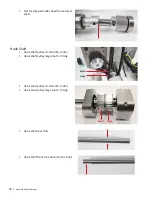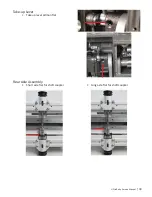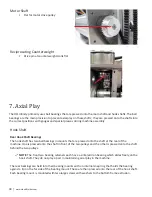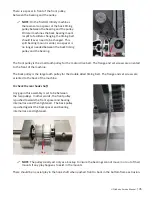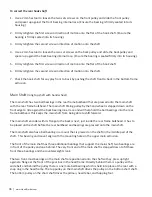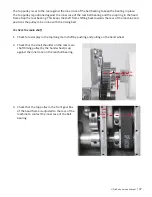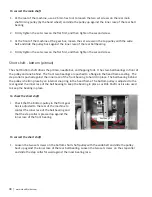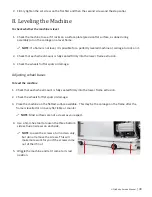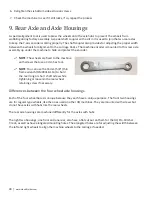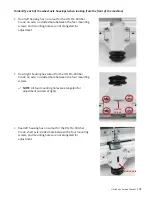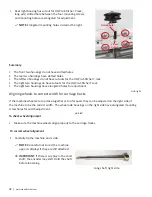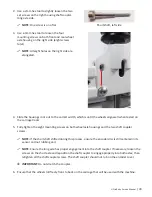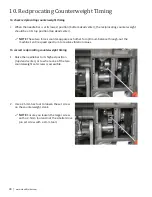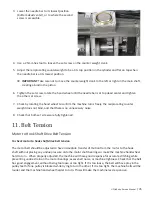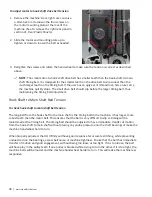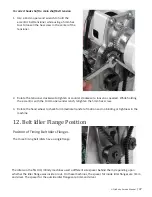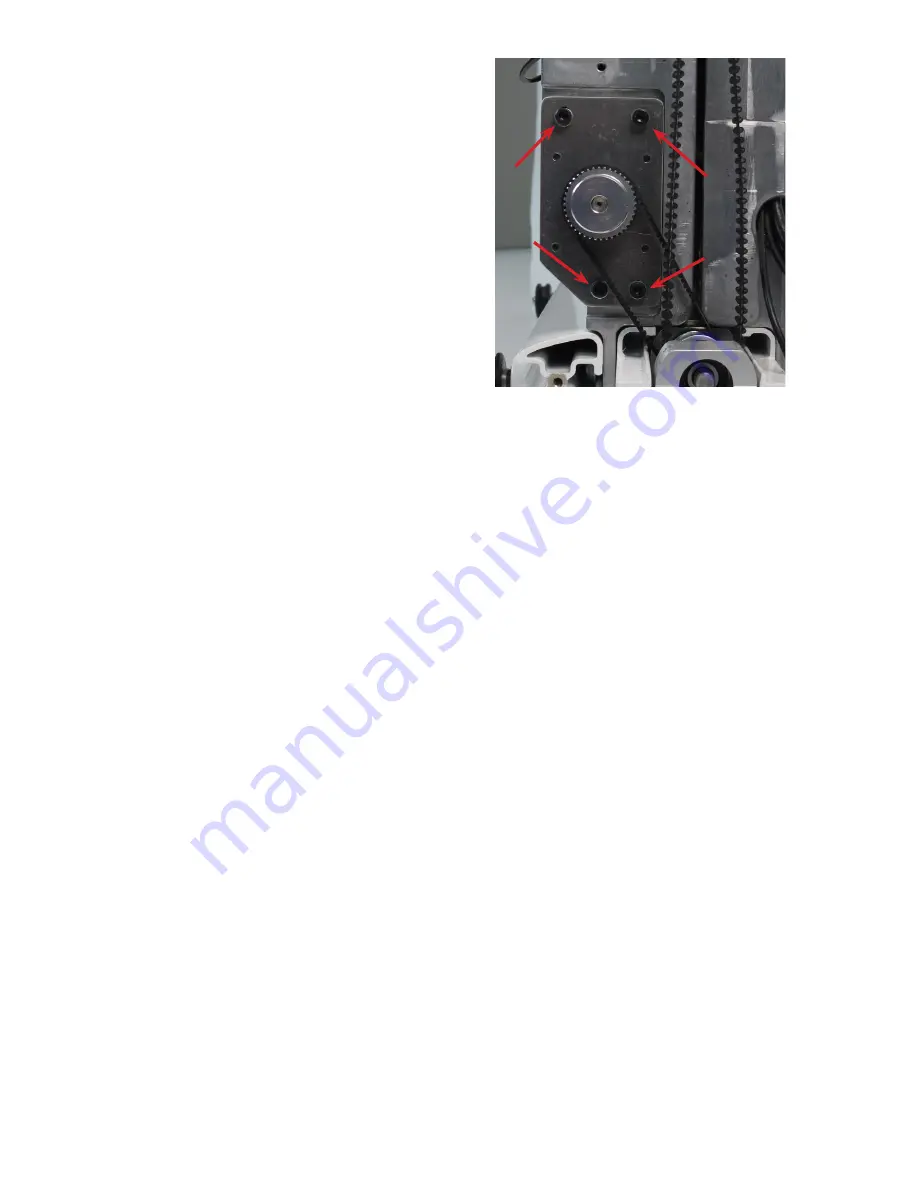
46 |
www.HandiQuilter.com
To adjust motor to hook shaft drive belt tension
1. Remove the machine’s rear right cover and use
a 4mm hex tool to loosen the four screws on
the motor mounting plate at the rear of the
machine. (See
To remove the right rear panel
in
section 21,
Rear Plastic Panels
.)
2.
Slide the motor and mounting plate up to
tighten or down to loosen the belt as needed.
3.
Retighten the screws and rotate the hand wheel to make sure the tension is correct as described
above.
NOTE
: The small motor-to-hook shaft drive belt has smaller teeth than the hook-shaft-to-main-
shaft timing belt. It is designed for the smaller teeth on the drive belt to slip sooner than the
much larger teeth on the timing belt. If the user has an
ugly event
(thread lock, hits a ruler, etc.),
the machine quickly stops. The small drive belt should slip before the larger timing belt, thus
maintaining the timing belt adjustment.
Hook Shaft to Main Shaft Belt Tension
To check hook shaft to main shaft belt tension
The long belt from the hook shaft to the main shaft is the timing belt in the machine. It has larger, more
robust teeth than the motor belt. This ensures that the belt is very difficult to slip so timing will be
maintained at the timing belt. The timing belt should be adjusted to have immediate transfer of motion
from the hook shaft to main shaft without placing any undue pressure onto the shaft bearings or make the
machine hand wheel hard to turn.
When properly adjusted, the HQ Infinity will have good response for accurate stitching, while preventing
undue strain on the bearings, excess belt noise, or machine tightness. Ensure that the belt has immediate
transfer of motion and good engagement, without being too loose or too tight. If it is too loose, the belt
will have play in the pulley teeth if one pulley is blocked while trying to turn the other. If it is too tight, the
machine belts will be louder and the machine hand wheel harder to turn. This will make the machine less
responsive.

